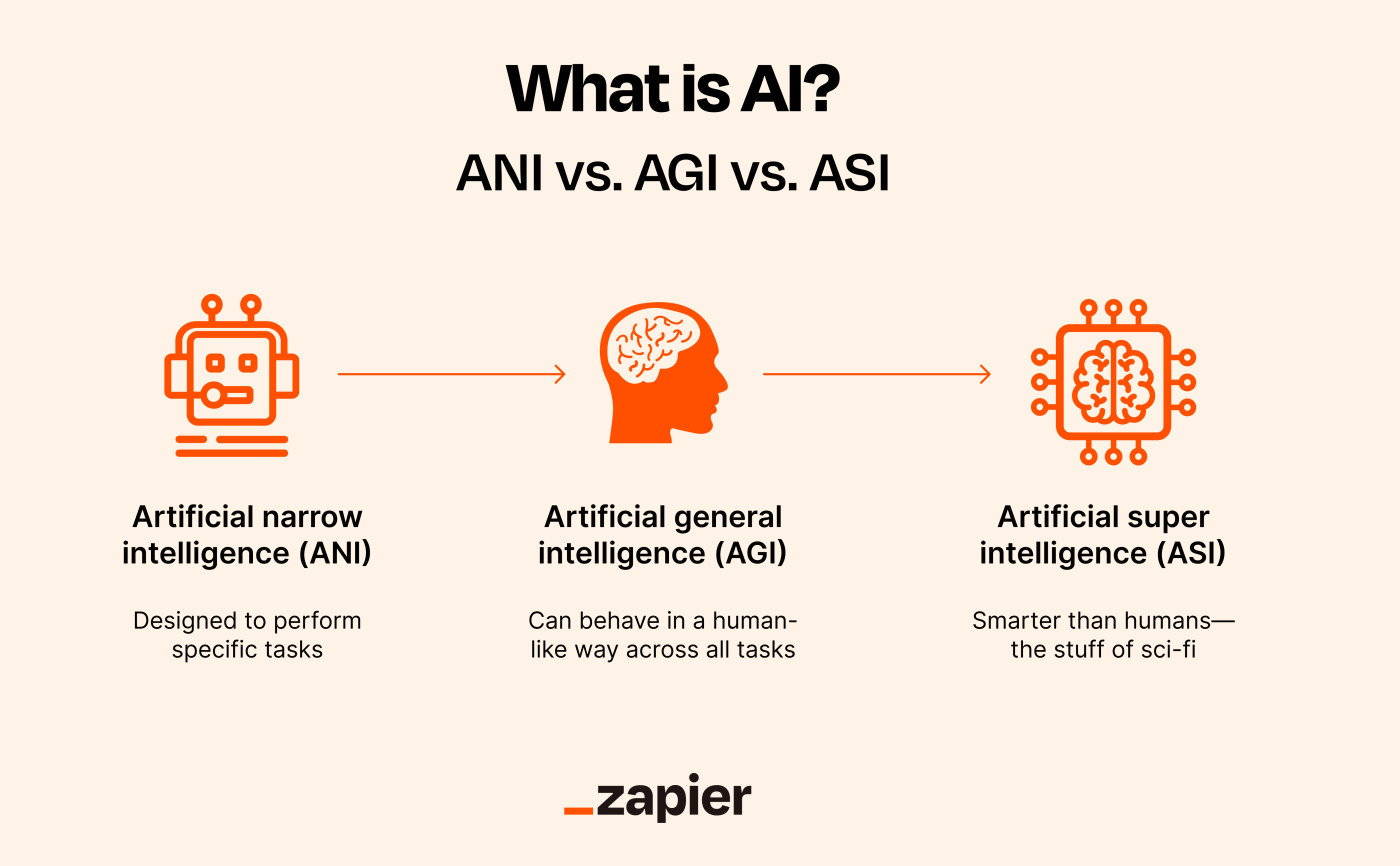2. Types of AI
ANI vs AGI vs ASI

Artificial Narrow Intelligence (ANI)
ANI is programmed to perform a single task. It is the only type of AI that is currently readily available on the market for consumers. ChatGPT, Siri and Google Translate are all examples of ANI. ANI is capable of completing simple repetitive tasks a lot faster than humans can, for instance checking weather, performing web searches or analysing raw data.
Artificial General Intelligence (AGI)
AGI is the type of AI that is seen in movies like I, Robot (2004) with Will Smith. AGI is expected to be able to reason, solve problems, make judgments and plan, learn from and use prior knowledge in decision-making. This means that AGI could potentially do a variety of tasks instead of focusing on a single narrow objective.
Artificial Super Intelligence (ASI)
ASI hypothetically possesses intelligence far surpassing that of humans. It is purely theoretical at this point and there is debate about whether or not this level of AI will ever be achieved or realised.
![]() Read more in the Zapier blog article What is artificial general intelligence (AGI)? 26 September 2023
Read more in the Zapier blog article What is artificial general intelligence (AGI)? 26 September 2023
Predictive vs Generative AI
Generative AI is a tool that uses machine learning to create new content from its inputs, ranging from text and images to music. Predictive AI uses the power of machine learning to forecast future events and enhance outcomes.
Predictive AI
Predictive AI uses data to extrapolate and make predictions from previous trends. This type of AI is used heavily in finance to make trades on the stock market, or in science to analyse large amounts of data.
Generative AI
Generative AI (GenAI) is based on the Natural Language Models and is a form of ANI. It creates a series of predictions based on existing online data, to generate new or similar content in response to written prompts. Generative AI such as Midjourney or Chat-GPT has rapidly increased in popularity in recent years, as these AI tools can respond quickly to user prompts, enabling opportunities for real-time application.
Generative AI tools are trained using diverse online datasets, including websites and social media conversations. This technology can create contextually relevant, human-like responses to user prompts and is versatile enough to generate software code, images, video, song lyrics and music.
![]() To learn more read Generative AI vs Predictive AI: What’s the difference? (eWeek 11 January 2024)
To learn more read Generative AI vs Predictive AI: What’s the difference? (eWeek 11 January 2024)
![]() How ChatGPT works? (YouTube 6m15s)
How ChatGPT works? (YouTube 6m15s)
GANs and CNNs
Generative Adversarial Networks or GANs are a framework used to train AI by making two different neural networks work in opposition to each other. The generator creates data (like images), and a discriminator evaluates this data, trying to distinguish between real and generated (fake) data. The generator aims to produce data so convincing that the discriminator cannot tell it apart from real data, while the discriminator gets better at telling the difference. Through this competition, both networks improve, leading to highly realistic synthetic data generation.
Convolutional Neural Networks or CNNs are a special type of neural network that uses a mathematical operation known as a “convolution” instead of multiplication for some of its nodes. This helps a lot in processing two-dimensional data, and this type of AI is used often for images and movies.
![]() CNN, GNN, and GAN: What are They? (YouTube 2m43s)
CNN, GNN, and GAN: What are They? (YouTube 2m43s)

